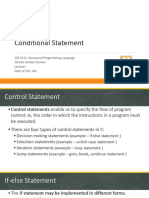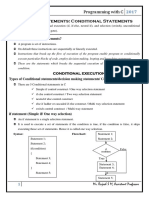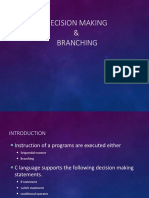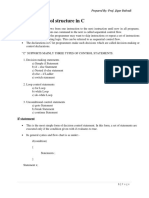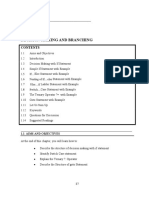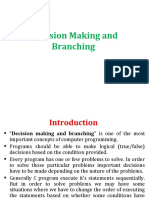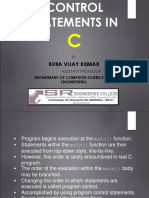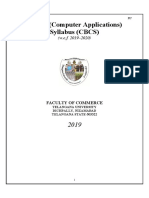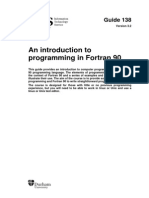0% found this document useful (0 votes)
9 views21 pagesUNIT 2 Control Structures
This document serves as an introduction to programming with a focus on control structures in the C language, covering conditional statements, loops, and decision-making constructs. It details various types of control statements such as if, if-else, nested if-else, else-if ladder, and switch statements, along with examples and flowcharts. Additionally, it explains loop structures including while and do-while statements, emphasizing the importance of control flow in programming.
Uploaded by
pavancharan576Copyright
© © All Rights Reserved
We take content rights seriously. If you suspect this is your content, claim it here.
Available Formats
Download as PDF, TXT or read online on Scribd
0% found this document useful (0 votes)
9 views21 pagesUNIT 2 Control Structures
This document serves as an introduction to programming with a focus on control structures in the C language, covering conditional statements, loops, and decision-making constructs. It details various types of control statements such as if, if-else, nested if-else, else-if ladder, and switch statements, along with examples and flowcharts. Additionally, it explains loop structures including while and do-while statements, emphasizing the importance of control flow in programming.
Uploaded by
pavancharan576Copyright
© © All Rights Reserved
We take content rights seriously. If you suspect this is your content, claim it here.
Available Formats
Download as PDF, TXT or read online on Scribd
/ 21



